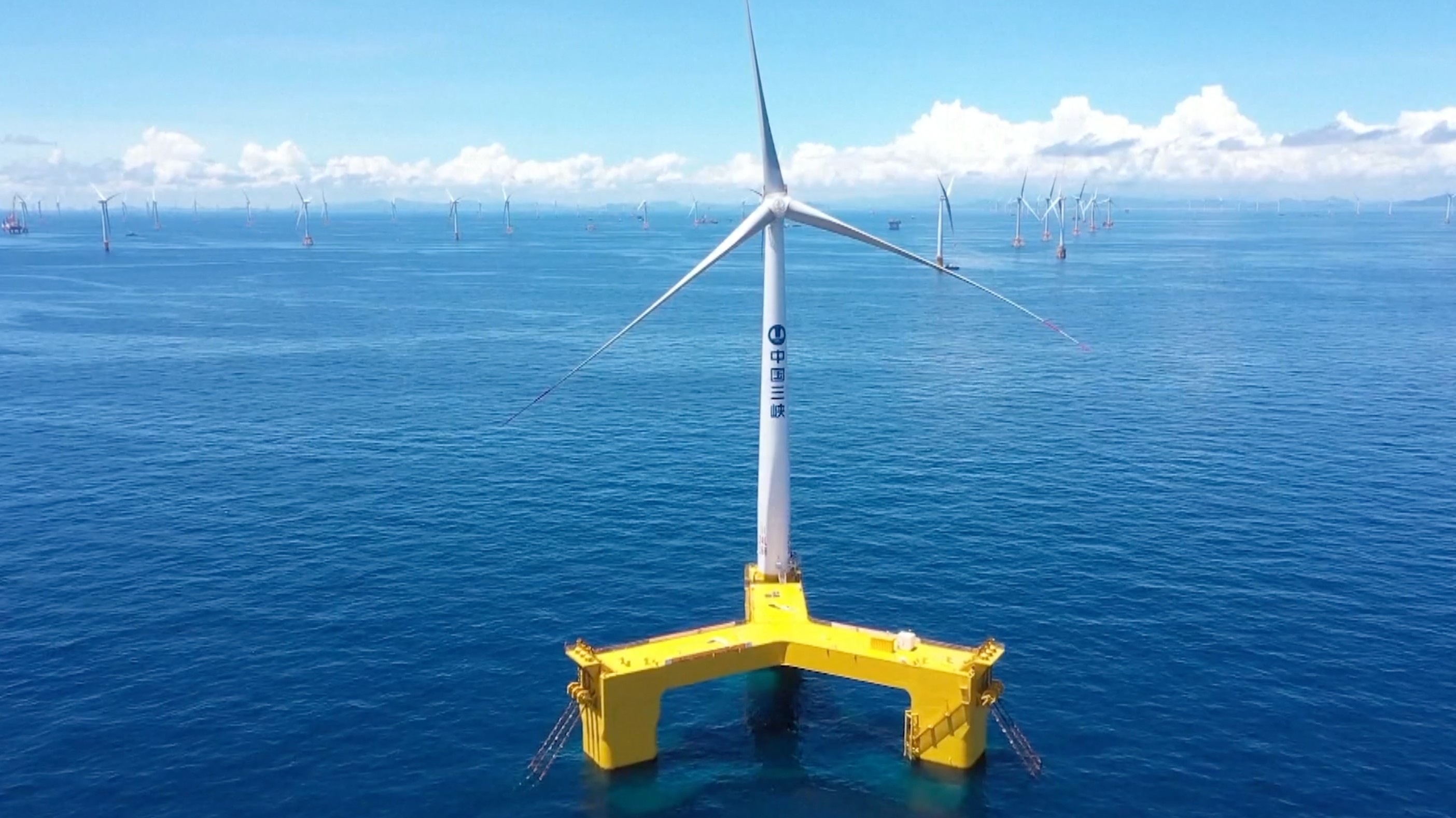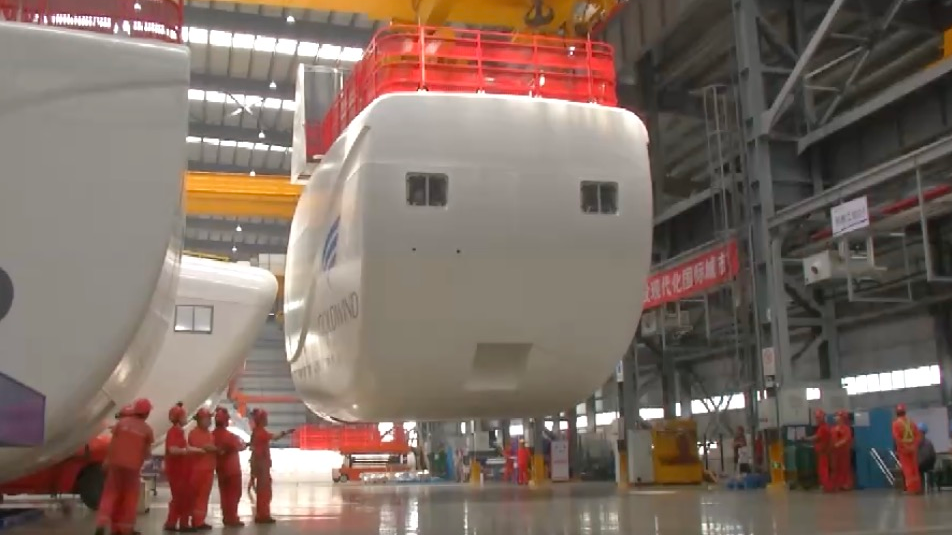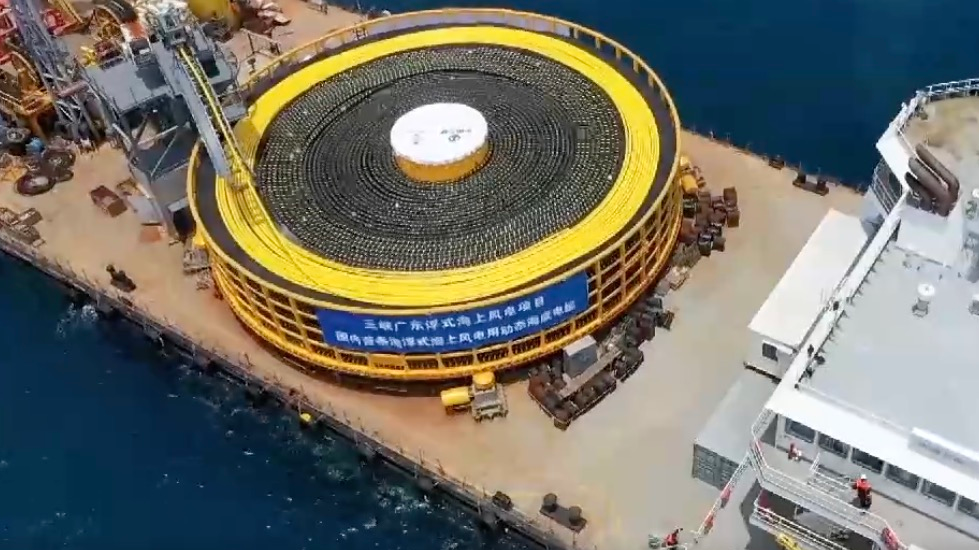01:22

The total output of China's first gigawatt-scale offshore wind farm has exceeded 1 billion kilowatt-hours, which can replace around 307,600 tonnes of standard coal, equivalent to the normal electricity consumption of 500,000 families of three for a year.
Located in the sea off Yangjiang City in south China's Guangdong Province, the Shapa project was connected to the grid at full capacity on December 25, 2021.
With a total installed capacity of 2 gigawatts, the project can provide 5.6 billion kilowatt-hours of clean electricity for the Guangdong-Hong Kong-Macao Greater Bay Area annually.
A high-tech project
China's offshore wind power technology has developed rapidly in recent years as the county leads the world in terms of offshore wind power installed capacity.
Wang Wubin, chairman of China Three Gorges Renewables (Group), told China Media Group (CMG) that the Shapa project employs top-of-the-line technologies that are used in offshore wind power projects globally.

Equipped with a high-precision real-time self-monitoring system, the Shapa project is the first project of its kind in China to have an active anti-typhoon system, which can be remotely controlled with the help of the Beidou satellite system. /CMG
Equipped with a high-precision real-time self-monitoring system, the Shapa project is the first project of its kind in China to have an active anti-typhoon system, which can be remotely controlled with the help of the Beidou satellite system. /CMG
Remote control using Beidou satellite
Equipped with a high-precision real-time self-monitoring system, the Shapa project is the first project of its kind in China to have an active anti-typhoon system, which can be remotely controlled with the help of the Beidou satellite system.
Chen Xiaohai, deputy general manager of the offshore business unit of Goldwind, told CMG that Beidou communications technology is used to minimize the impact of typhoons on the power unit.

Seen as a "bottleneck" technology of clean energy, submarine cables are a key to cross-sea electric power transmission. /CMG
Seen as a "bottleneck" technology of clean energy, submarine cables are a key to cross-sea electric power transmission. /CMG
'Bottleneck' submarine cable tech
Seen as a "bottleneck" technology of clean energy, submarine cables are a key to cross-sea electric power transmission. In order to realize long-distance transmission, these cables must be able to withstand harsh oceanic environment and resist corrosion among other factors.
"We have laid more than 770 kilometers of cables in total for the Shapa offshore wind project. We have also overcome a number of worldwide technical problems, such as manufacturing and quality control of super-large scale marine cables. Our team has mastered core techniques such as the large-size cable forming technology," Xia Feng, president of Orient Cable, told CMG.

